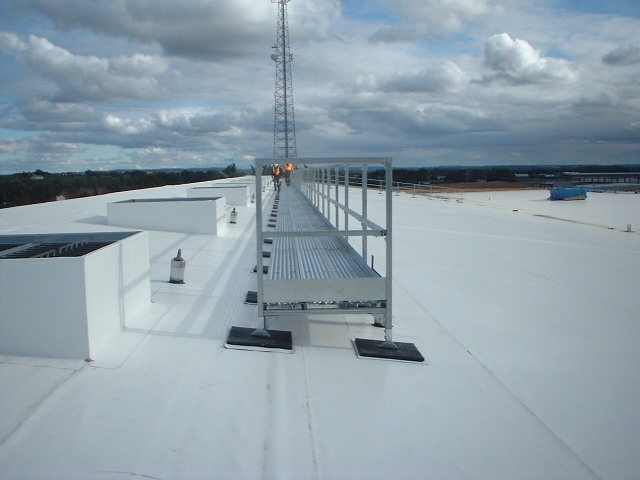Tpo s long term heat uv and natural fungal resistance plus flexibility without need for plasticizers also make tpo a reliable low slope.
Thermoplastic pvc tpo roof membrane.
The most obvious similarity is that tpo thermoplastic olefin and pvc poly vinyl chloride are both thermoplastic materials.
Like pvc tpo can be installed fully adhered mechanically fastened or loose laid with ballast.
Sikaplan is a cost competitive single ply pvc roofing membrane designed for low slope roofing applications.
In our view thermoplastic polyolefin tpo membranes have an uneven performance history.
Unlike sarnafil which is formulated to perform above and beyond the industry standard sikaplan is formulated to the industry standard like the rest of the thermoplastic roofing membranes on the market.
Polyvinyl chloride pvc pvc sheets are produced by calendaring spread coating or extruding and typically are reinforced with polyester or glass fiber mats or scrim.
However same benefits can be achieved if managers get the membrane coated with a white coating.
This will ensure a longer life span of the roofing system.
Thermoplastic polyolefin tpo is also a very common thermoplastic roof membrane that is manufactured in white colors.
Heat welded seams provide superior strength.
Pvc sheets contain plasticizers and stabilizers.
This membrane is best recognized for having the benefits of epdm and pvc systems at a more economical cost.
Initially tpo roofing was designed to be an improved version of both pvc and epdm rubber membranes combing the benefits of both but without the disadvantages.
Short for thermoplastic polyolefin tpo is a single ply roofing membrane that offers excellent performance at a cost effective price.
We have first hand experience with some mid 1990 tpo membranes that had problems with welding even when new.
In the building trades the acronym tpo stands for thermoplastic polyolefin a material originally developed for pond liners and used extensively for roofing since 1989 it s a single ply membrane made from a polymerized combination of polypropylene and ethylene propylene rubber that can be attached to a roof with adhesive or with mechanical fasteners.
The following provides general descriptions of these two systems.
The most common thermoplastic roof membranes are pvc and tpo.
Sheets range in thickness from 40 mils to 100 mils and are available as both reinforced and non reinforced membranes.
Tpo membranes are white and highly reflective making them an excellent choice for those looking to reduce.
The tpo membrane was first introduced to the roofing market in the early 1990 s as a more economical and efficient alternative that was thought to replace pvc roofing products.
We have seen many tpo roofs less than 10 years old with serious levels of membrane deterioration.
Tpo membranes are made with a co polymerized rubber that allows them greater flexibility in cold climates.
Tpo and pvc prominent examples of thermoplastic membranes.

